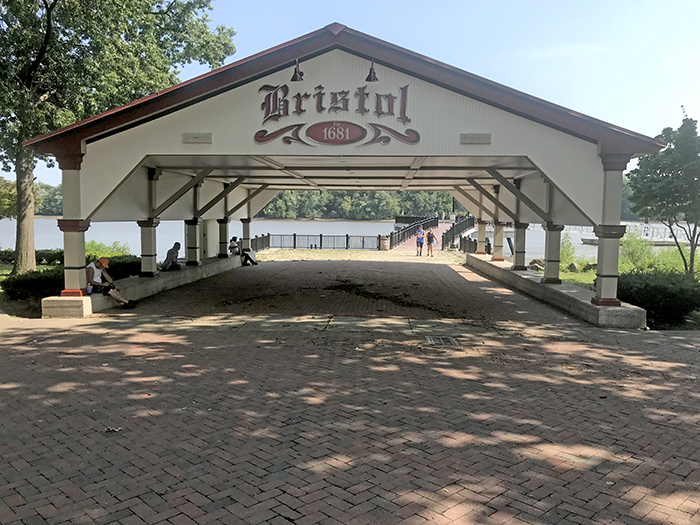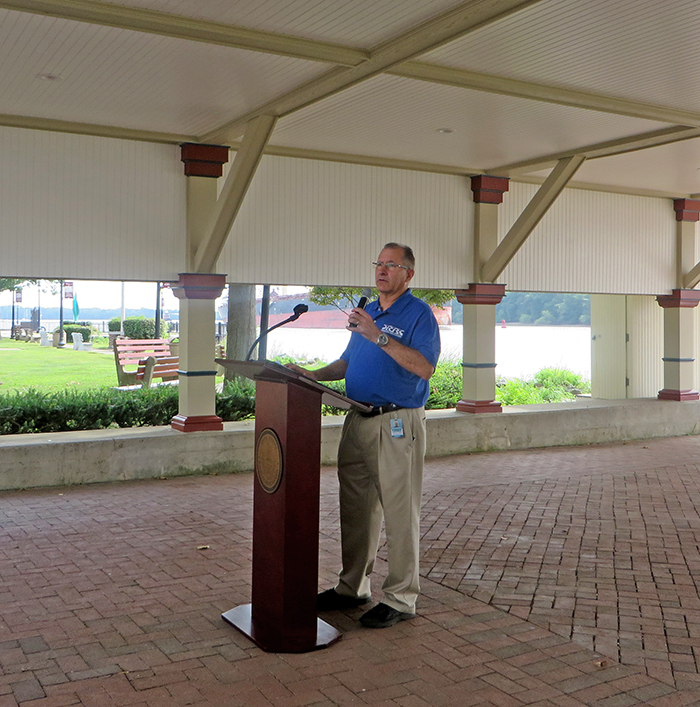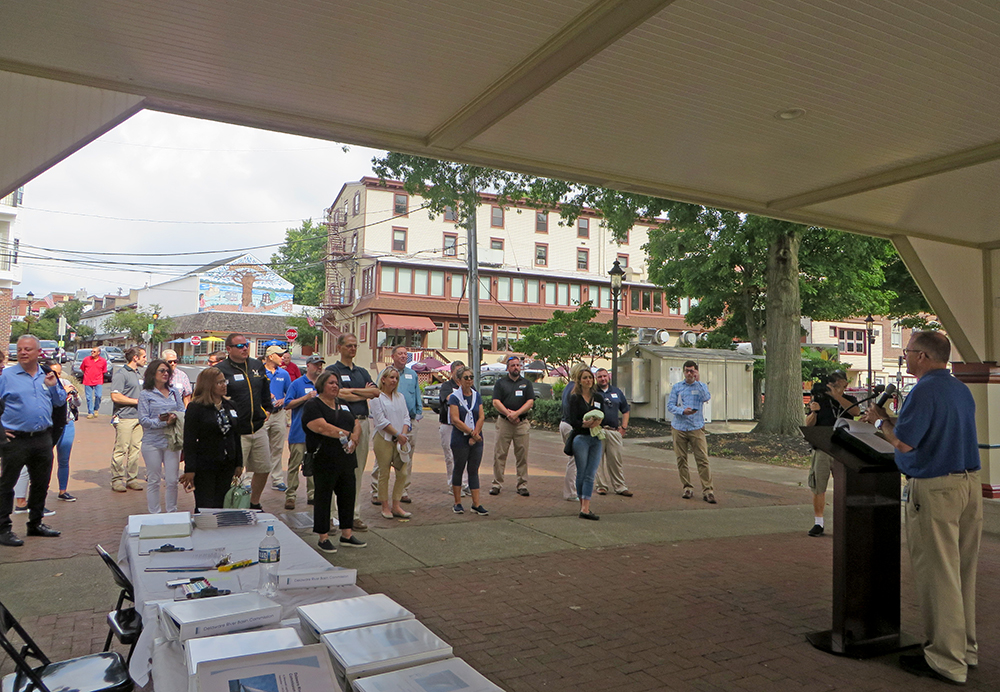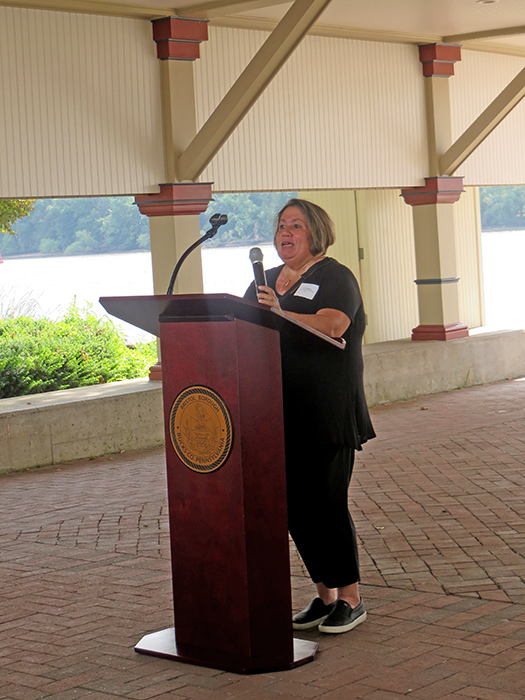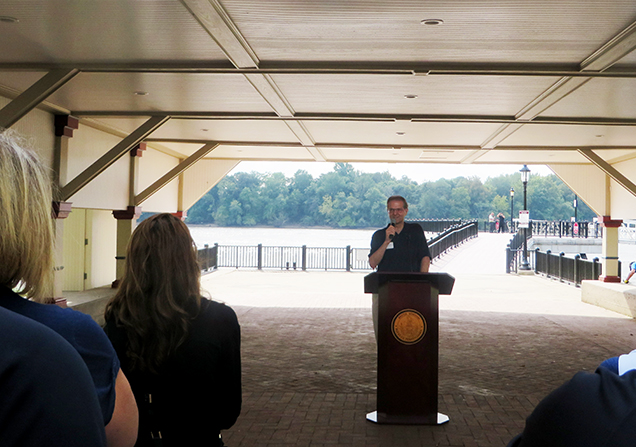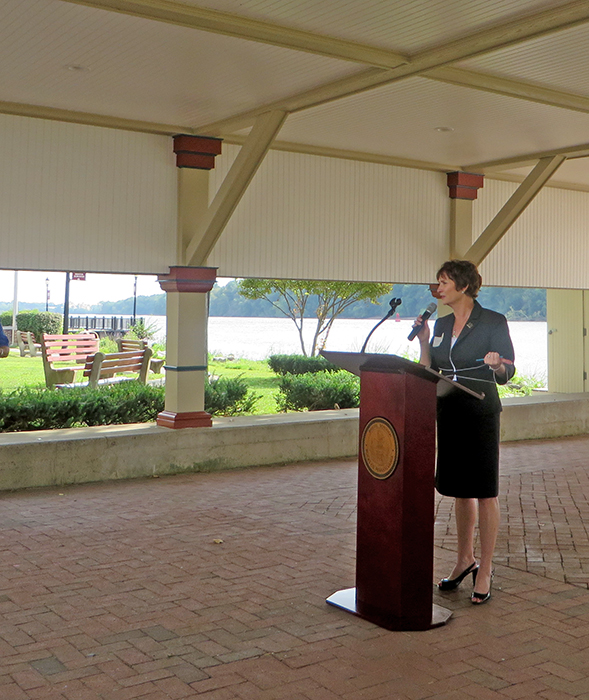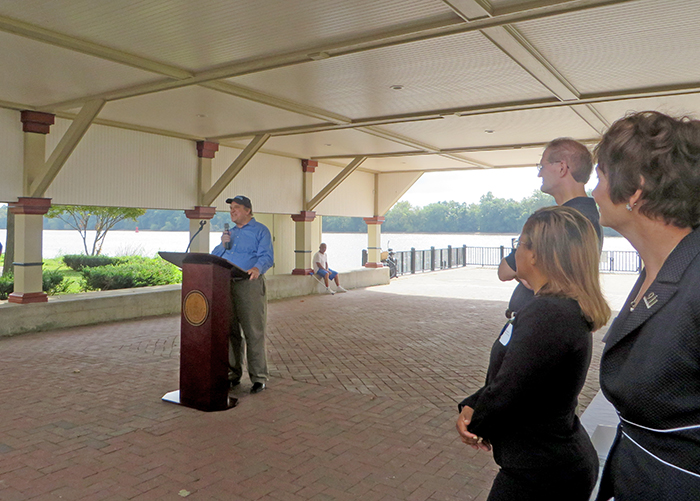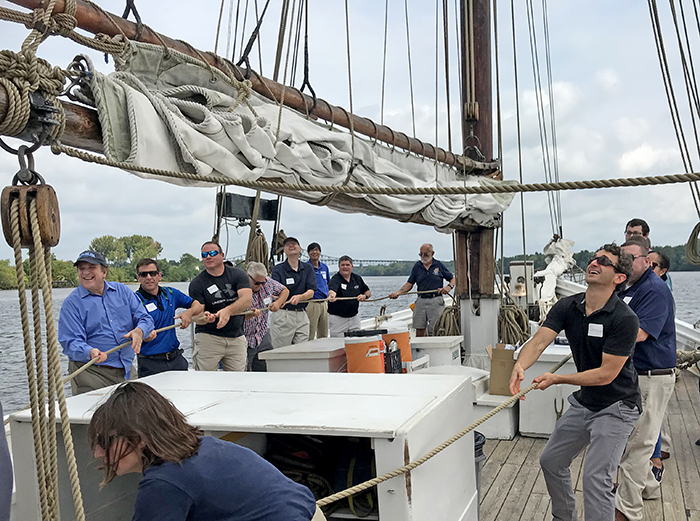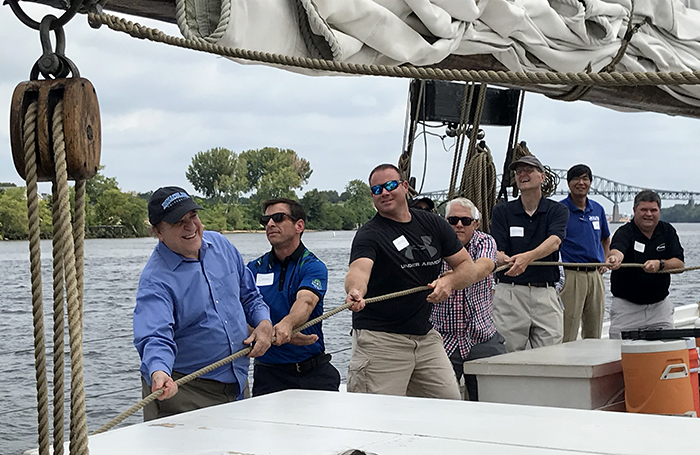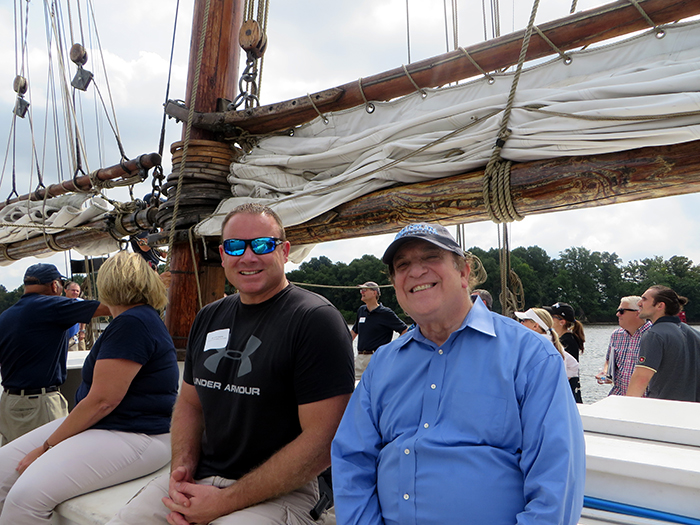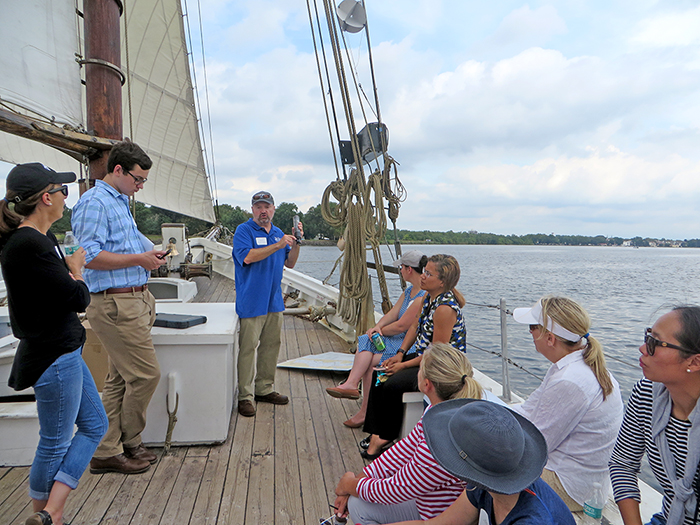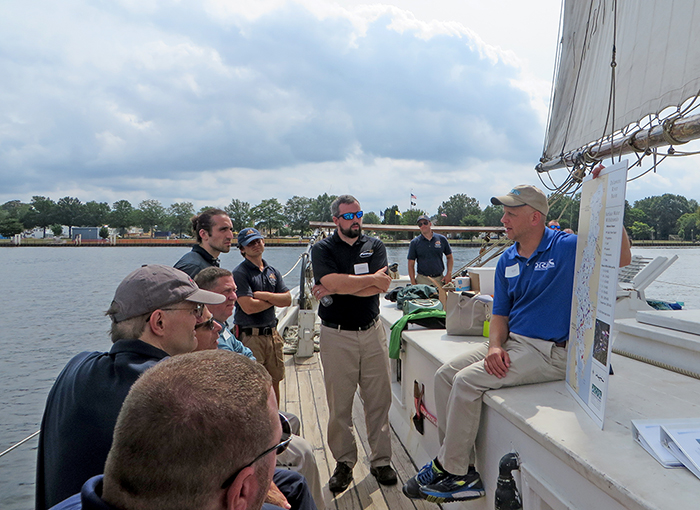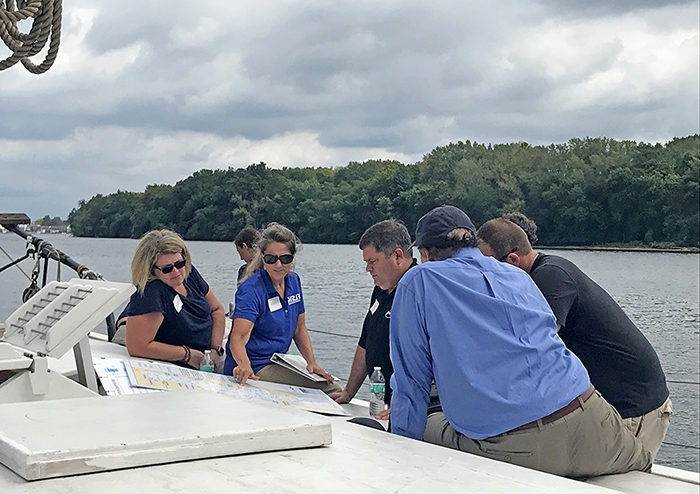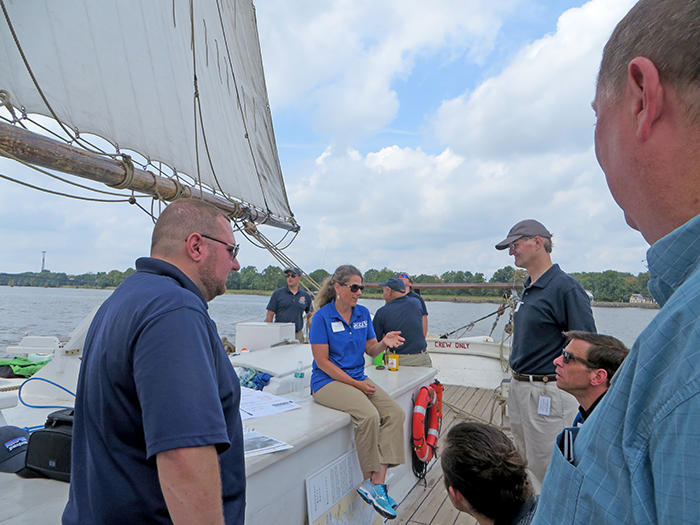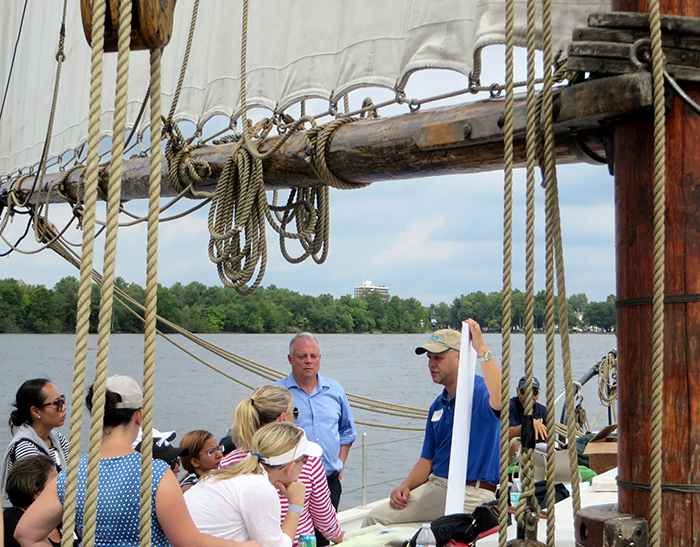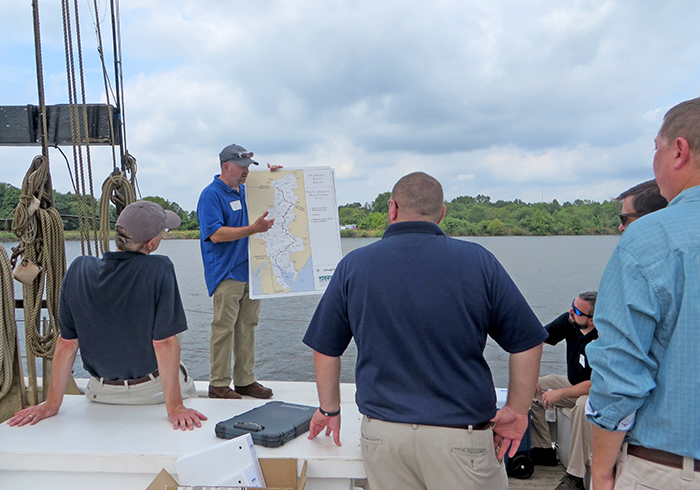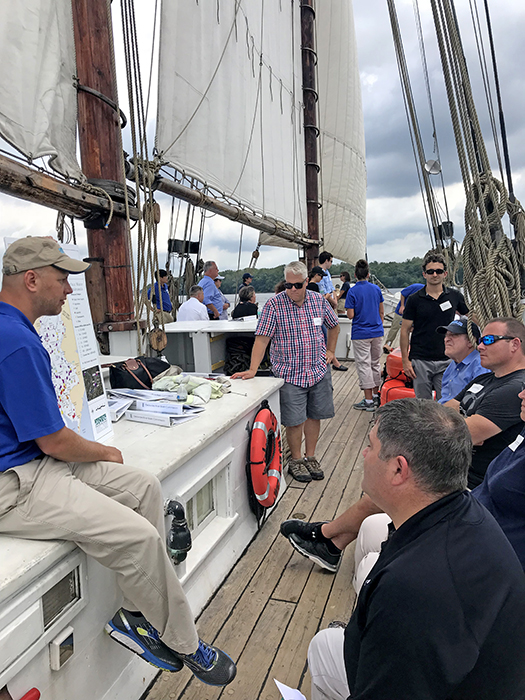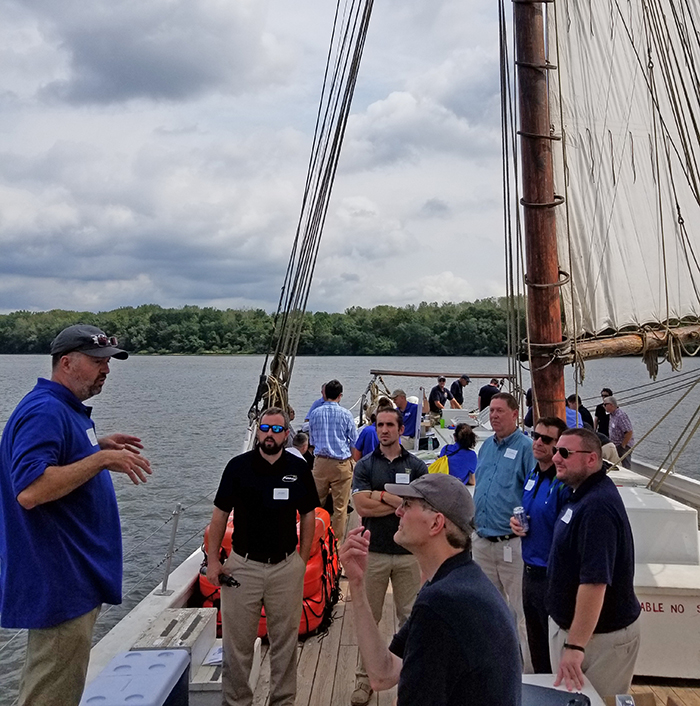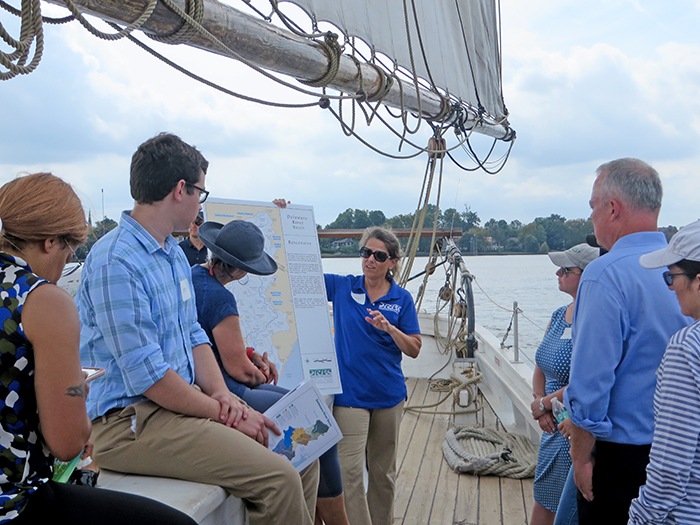Delaware • New Jersey • Pennsylvania
New York • United States of America
 |
| The A.J. Meerwald docked in Bristol, Pa. Photo by DRBC. |
Recently, members of the Pennsylvania Joint Legislative Conservation Committee (JLCC), Pa. House and Senate Appropriations Committees, staffers, and local leadership took part in an educational sail aboard the historic schooner AJ Meerwald to learn more about the DRBC and its programs. Preceding the sail, the legislators held a press conference at the Bristol Borough Wharf along the Delaware River recognizing the importance of the river to the Commonwealth and to the region.
The JLCC is a bipartisan committee made up of members of the Pa. House and Senate whose mission is to assist the Pa. General Assembly in ensuring the sustainable use and care of Pa.’s land, water, and air. Local members of the JLCC who participated on Friday include Sen. Andrew Dinniman (D, PA-19), Rep. Marguerite Quinn (R, PA-143), Rep. Perry Warren (D, PA-31), Rep. Donna Bullock (D, PA-195), and Rep. Mary Jo Daley (D, PA-148). Several of the JLCC members, including committee chair Senator Scott E. Hutchinson (R, PA-21) and Senator Scott Martin (R, PA-13), represent districts outside of the basin, but attended this event to learn more about the commission and show their support for the Delaware River.
The event came to fruition based on a recommendation from JLCC member Bullock for DRBC to engage the committee on major DRBC water management programs. Instead of holding the meeting in a traditional conference space, the commission decided on a more experiential approach and reached out to the Bayshore Center at Bivalve to see if they would be willing to host the event aboard the schooner AJ Meerwald. What better way to learn about the Delaware River and DRBC than on an historic sailing vessel, and once on board, participants got right to work helping hoist the sails and then split into three groups for short educational sessions with DRBC staff.
DRBC Manager for Water Quality Assessment John Yagecic, P.E., talked about the commission’s programs that assess and protect water quality throughout the basin, for example, DRBC’s efforts to reduce PCBs and other toxic pollutants in the Delaware Estuary (the tidal Delaware River and Bay); its Special Protection Waters program that protects the existing high quality waters of the non-tidal Delaware River; and a new, multi-year effort to examine whether criteria for dissolved oxygen can be improved to further support all life stages of resident and migratory fish in the Delaware Estuary and Bay. You can’t manage what you don’t measure, and monitoring is an important part of the commission’s programs to manage and improve water quality for all those that depend on this resource for drinking, agricultural, and industrial use, as well as for aquatic life.
View Presentation: DRBC Water Quality Monitoring Programs (pdf 2 MB)
The lesson by DRBC Manager for Water Resource Operations Amy Shallcross, P.E., focused on flow management in the Delaware River Basin. Even though the Delaware River is undammed, its flow is still highly managed through reservoir releases and flow regimes. This is especially important in times of drought or dry periods to ensure that there is enough fresh water flowing downstream to repel the salty water from the ocean that could impact drinking water and industrial intakes along the tidal portion of the river. During past droughts in the basin, DRBC’s drought management programs have proven successful in ensuring drinking water sources were protected and other water uses, for example, industry and power generation, were not curtailed.
View Presentation: Flow Management in the Delaware River Basin (pdf 858 KB)
DRBC Manager for Water Resource Planning Chad Pindar, P.E., focused his talk on various water uses in the basin and how DRBC manages water supply. Thermoelectric power generation, public water supply, out of basin diversions, and industry are the largest water users in the basin, and DRBC regulatory policies are in place to help balance these needs to ensure there is enough water for all uses, as well as for in-stream flow needs. The commission is also looking at projected demands to ensure a dependable water supply for the basin in the future.
View Presentation: Overview of Water Supply and One Process - One Permit Program (pdf 1.2 MB)
At the end of the sail, participants disembarked the AJ Meerwald with a greater understanding of the Delaware River’s importance to the region and a new appreciation of the commission's efforts to manage and protect this resource, which provides drinking water for about 15 million people, including nearly 5.5 million Pennsylvanians.
Special thanks also go to event sponsor Pennoni, the Bayshore Center at Bivalve, the AJ Meerwald crew, the Bristol Borough Council, and Rob Strasser of the King George II Inn.
Copyright © Delaware River Basin Commission,
P.O. Box 7360, West Trenton, NJ 08628-0360
Phone (609)883-9500; Fax (609)883-9522
Thanks to NJ for hosting the DRBC website
